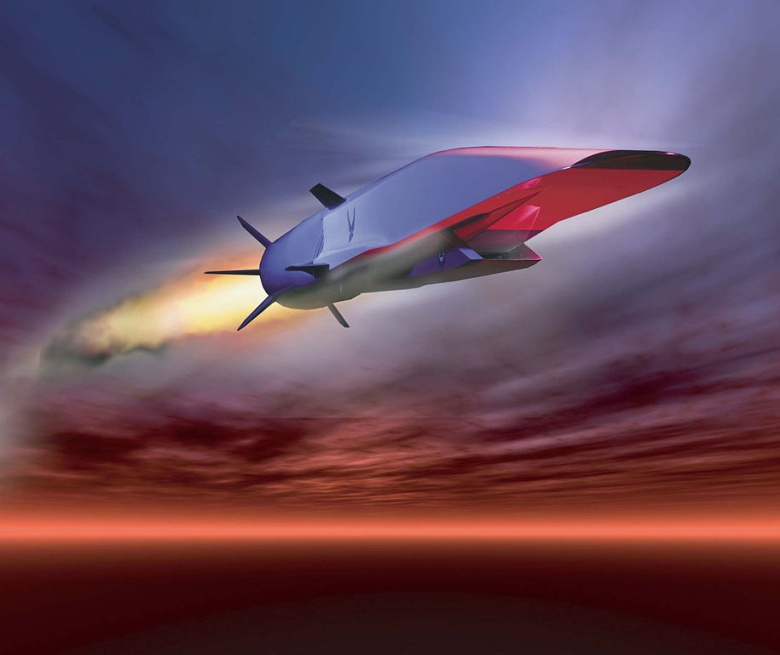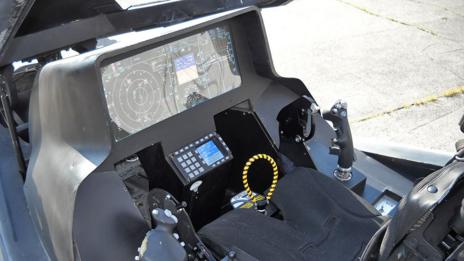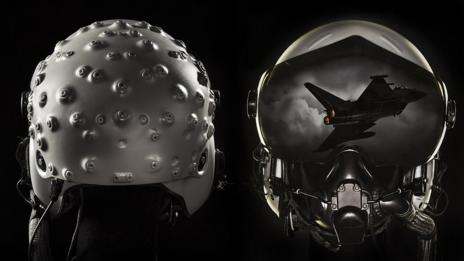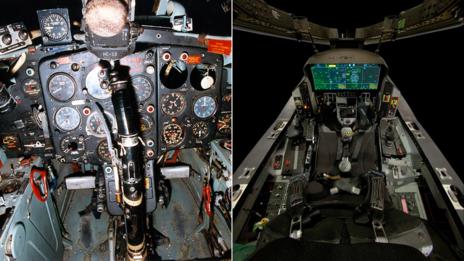 The Laser Weapon System (LaWS) was mounted atop the bridge of the USS Ponce for an operational demonstration while deployed to the Persian Gulf. It is self-contained, but a special power generator was fitted to the ship for the trial. (US Navy photo)
The Laser Weapon System (LaWS) was mounted atop the bridge of the USS Ponce for an operational demonstration while deployed to the Persian Gulf. It is self-contained, but a special power generator was fitted to the ship for the trial. (US Navy photo)
With remarkably little fanfare, the US Navy in December deployed a high-tech weapon that could change the face of warfare more than any other invention since gunpowder. And, simply by the performance demonstrated in initial trials this autumn, it has already rendered obsolete a wide swathe of existing weapons, which it will soon replace, thanks to capabilities that are superior by any measure.
The weapon is the 30-kilowatt Laser Weapon System (LaWS) that the US Navy installed aboard USS Ponce this summer as part of a joint $40 million research and development effort by the Office of Naval Research (ONR) and Naval Sea Systems Command (NAVSEA) to test the operational viability of directed energy weapons.
LaWS is by no means the first laser weapon to be tested or demonstrated, but it is the first to have actually attained Initial Operating Capability (IOC) by virtue of being deployed in a combat theater even though this milestone has not been officially recognized.
In the short term, the LaWS will likely pose a mortal threat to makers of medium-calibre artillery and short-range air-defense missiles, but if the technology can be adapted to a bigger scale it could eventually replace all line-of-sight weapons in military inventories.
Given LaWS’s potential, it is surprising that it has attracted so little attention in the media, and so little reaction from the makers of the weapons it so obviously suited to replace. A plausible explanation is that, after large, high-profile lasers failed to live up to their promise and were canceled, many considered that there was no realistic prospect for any type of laser weapon, and the idea faded away from public attention.
Less than a dollar a shot
But laser weapons are not a distant prospect. Under ONR's Solid-State Laser-Technology Maturation program, industry teams have already been selected to “develop cost-effective, combat-ready laser prototypes that could be installed on vessels such as guided-missile destroyers and the Littoral Combat Ship in the early 2020s,” the US Navy stated in its Dec. 10 release on LaWS testing.
In addition to its capabilities, the LaWS has an irresistible edge over existing weapons: "At less than a dollar per shot, there's no question about the value LaWS provides," ONR chief Rear Adm. Matthew Klunder told reporters Dec 10. "With affordability a serious concern for our defense budgets, this will more effectively manage resources to ensure our sailors and marines are never in a fair fight." Other media report Klunder as saying each shot costs $0.59.
Videos taken during operational tests in the Persian Gulf show a weapon that is already remarkably effective, capable of punching through admittedly thin steel plate, and of destroying with a single pulse a small weapon fitted to a small boat moving at high speed. At can also, at low power, be used to “dazzle” a target and its sensors.
The US Navy said that during the tests “LaWS hit targets mounted aboard a speeding oncoming small boat, shot a Scan Eagle unmanned aerial vehicle (UAV) out of the sky, and destroyed other moving targets at sea,” and “performed flawlessly, including in adverse weather conditions of high winds, heat and humidity….[and] exceeded expectations for both reliability and maintainability.”
Although weaponized lasers still face major hurdles before they can completely replace small- and medium-calibre cannon, this weapon is revolutionary is many respects, and notably by its accuracy, its end effects, and its lack of collateral damage. And it is now, demonstrably, operational.
“The captain of that ship has all of the authorities necessary if there was a threat inbound to that ship to protect our sailors and Marines [and] we would defend that ship with that laser system,” ONR chief Rear Adm. Matthew Klunder told reporters Dec 10.
Once its basic suitability is fully demonstrated, the prospects for laser weapons will be virtually unlimited.
Christopher Harmer, a naval analyst at the Institute for the Study of War, told Russia’s Sputnik news service that "The existing naval weapons systems, small-calibre cannon, large-calibre naval guns, and missiles, are at or near the limits of their potential capability. Guns and missiles just aren't going to get much more accurate or lethal [while] lasers have significant potential for increases in range, accuracy, lethality, reliability, and cost-effectiveness".
The Guardian reported Dec 10 that ONR’s Klunder said while LaWS is not powerful enough to destroy “frigate-sized vessels [there is] a 150 kilowatt laser weapon – five times as powerful as the one mounted on the Ponce – currently in development,” so the race to greater power has already begun.
Lasers better than cannon
One of the more remarkable aspects of the Ponce trials is the high accuracy evidenced in the video below.
Accuracy obviously depends on the quality of the weapon mount, of targeting sensors and of pointing mechanisms, and in the case of a laser the absence of recoil forces, of the ammunition feed and of empty cartridge ejection means the entire assembly can be made lighter, faster and more economical.
Accuracy also is a factor of the speed of the projectile. A 25mm round travels at about 1,100 meters per second, and during that second a speed boat running at 30 knots will have moved about 15 meters – making it a difficult target to hit, especially if the firing ship is cosseted by the sea.
A laser fires at the speed of light – 300,000 meters/second – so that same boat will have moved only 5 centimeters between the time the laser is fired and the time it hits –-making a bull’s eye almost a certainty.
In many respects, the LaWS is the exact opposite of the Phalanx Close-In Weapon System, which fires a constant stream of 20mm rounds at incoming missiles at a rate of 4,500 rounds per minute. Each round costs about $3-4, so a 100-round burst will cost about $350 on average, and the Phalanx assembly, with its own radar, weighs around 6 tonnes and has to absorb the recoil while keeping the gun aimed at the target.
By comparison, the LaWS costs $0.6 per shot, is nearly always on target, and generates no recoil, so it is clearly the superior weapon. Achieving the level of accuracy described above at this level of cost opens a dazzlingly wide range of operational options.
 The Laser Weapon System (LaWS) installed aboard the USS Ponce is controlled through an operator station that, in many respects, resembles a personal video gaming set-up with a similar two-handed controller. (US Navy photo)
The Laser Weapon System (LaWS) installed aboard the USS Ponce is controlled through an operator station that, in many respects, resembles a personal video gaming set-up with a similar two-handed controller. (US Navy photo)
In the case of a small, attacking boat, a ship-mounted laser can disable its outboard engine, hole its hull or even, as shown in the US Navy’s video, disable only its weapons and/or its sensors, thereby rendering it inoffensive without destroying it or its crew. Such a laser could even defend a ship against a swarm of small boats thanks to its speed, its accuracy and its ability to immediately re-target.
Having proved the principle – and the video is ample proof – all that remains is for the laser weapon to be refined, by improving its targeting sensors, its aiming servos and its stabilization in addition to boosting its power output.
Also feasible in the short term are variants to meet other military requirements, such as defending against enemy helicopters, tactical missiles, rockets, artillery and mortar rounds, UAVs and loitering weapons.
A laser could also find many other applications on the battlefield, from neutralizing enemy laser designators to disabling soft-skinned or lightly armored vehicles and other targets, and when necessary by hitting their engines, wheels or tracks instead of destroying them outright. It would thus prove extraordinarily useful for peacekeeping forces or even to control hostile crowds.
And an added advantage is that defenses and countermeasures will be tricky to develop, as a laser ray is not visible, can be detected only on impact, and is near-impossible to decoy or spoof.
Limits remain power generation and beam dispersion
In fact, the only obstacle standing in the way of the laser’s takeover of the modern combat arena is elementary physics, in the form of the physical laws that govern power generation and the dispersion of light.
Given today’s technology, it is difficult to generate (and re-generate) enough electric power to engage and to destroy large targets, especially if they are heavily protected. Power generation is the first major technological obstacle that industry will have to solve if lasers are ever to become operationally effective weapons.
But lasers are not the perfect answer to all military requirements. Their light beams, for example, are affected by impurities in the air, ranging from humidity to dust, and from salt to smoke. However, the US Navy reported that the LaWS “performed flawlessly, including in adverse weather conditions of high winds, heat and humidity,” but did not provide any details.
China, Russia Advance in Lasers, Europe Lags
Given their potential, the US is not alone is working to perfect laser weapons. Russia and China have similar programs, while Israel is completing development of its first such system, but Europe seems to have been taken by surprise by the pace of development, and to be lagging.
 The business end of the Laser Weapon System, mounted on top of the ship’s bridge, is relatively compact, with few moving parts and, most importantly, no recoil. It can thus be positioned where required on the ship, or on a shipping container inside which could be installed its power generator. (US Navy photo)
The business end of the Laser Weapon System, mounted on top of the ship’s bridge, is relatively compact, with few moving parts and, most importantly, no recoil. It can thus be positioned where required on the ship, or on a shipping container inside which could be installed its power generator. (US Navy photo)
At the Singapore Air Show in February 2014, Israel’s Rafael unveiled the Iron Beam, a laser-based air defense system it said can incapacitate missiles at ranges of up to two kilometers. According to Rafael’s CEO, the weapon is “able to bring down mortars like flies," and its development is still ongoing.
China also says it has successfully developed a laser defense system that can shoot down small-scale low flying drones within a two kilometer radius in five seconds, Xinhua news reported Nov. 2.
It said China’s laser system with its precision, speed and low noise can shoot down drones at an altitude of 500 meters and a speed of 50 meters per second (180 kilometers per hour), citing a statement published by the China Academy of Engineering Physics.
The NATO Science & Technology Organization board has approved the stand-up of an SCI Task Group, SCI-264, to examine the tactical implications of these next-generation laser weapons with a focus on issues associated with employment in the shared NATO battlespace. The kickoff meeting for SCI-264 was held on 5-7 November 2014 at the STO Collaboration Support Office facilities in the Paris suburb of Neuilly-sur-Seine.
“The meeting was very productive and the group achieved consensus to pursue a 3-year program of work that will have several main products. First will be a briefing suitable for senior NATO leadership to provide better awareness of the rapid advancement in HEL weapon capabilities, the tactical scenarios that are likely to be suitable for employment of such systems, and the implications for collaborative military operations,” NATO said in a Dec. 8 statement.
It added that the next meeting of SCI-264 will be hosted by the UK in the March 2015 timeframe, and that the group is still open for participation from additional interested countries.
Russia’s work on laser weapons is focused on air-defense, but reportedly also comprises an aircraft-based system. Izvestia daily reported in November 2012 that the Russian Defense Ministry “had placed an order with the defense industry to resume development of combat lasers. It quoted well-informed sources in the defense industry as saying that the order focused on modernization of an A-60 flying laboratory on the basis of the Ilyushin-76 airlifter,” Itar-TASS reported Dec. 12.
“It is clear as daylight now that the transformation of Star Wars scenarios into reality has flopped but laser weapons should develop as part of tactical air defense strategies now,” Alexander Khramchikhin, a deputy director of the Institute of Political and Military Analysis told TASS Dec. 12. “That’s the only niche but there’s no alternative to lasers in it.”
He added that “It’s more or less clear today that lasers don’t have any other combat use, as the problems of energy and dispersal of the beam at long distances cannot be resolved at the current stage.”
It quoted Russian weapon expert Igor Korotchenko as saying that "Russia has similar developments, but we are also supposed to develop and create an aircraft-based laser weapon. I should say such research needs a large amount of money, but it is needed to be done in order to maintain a technological balance with the US."





